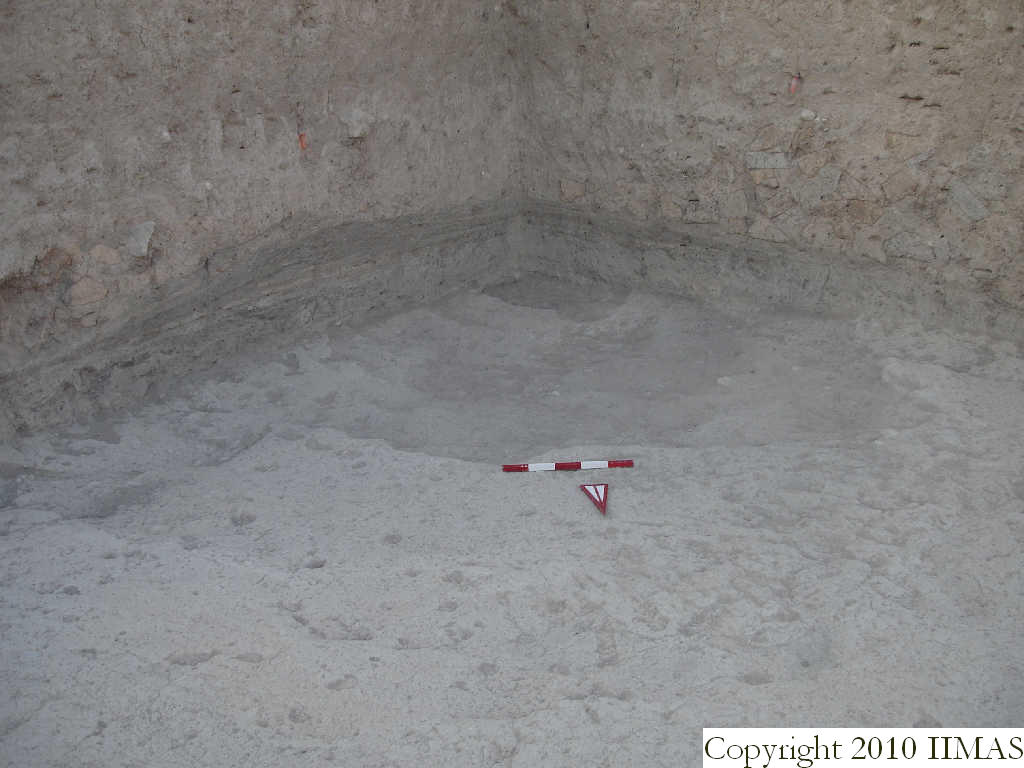Back to top: Emplacement for Unit J6 Layering
Introduction
Gradual build-up accounts for more than half of all J6 features, with a total of 163 elements within a total of 347.
Back to top: Emplacement for Unit J6 Layering
Topsoil
Topsoil is the upper ca. 20 cm of the Tell surface. It is characterized by being a dusty soil including roots, stones but also some pottery and modern material. A good exaple of topsoil is f5.
Back to top: Emplacement for Unit J6 Layering
Accumulations
In J6, 40% of the features excavated are accumulations. Accumulations are the gradual build-up of debris and material due to human activity and, to some extent, the precipitation of natural debris such as dust and sand. For definition an accumulation is bounded by at least one wall and we can observe elements such as pottery sherds and small stones or pebbles, ash and organic particles with a horizontal angle of repose. The upper 2 m of J6 were accumulations, interrupted by floors, amorphous amassments or layers. The list of all accumulations can be found in typological index. Here I will single out the most interesting ones.
We recorded different types of accumulations. f141, was located directly on top of surface f140. Accumulation f3 was being located on top of other accumulation.
In J6 we distinguished lenses from accumulations as defined in the grammar. A lens is a gradual accumulation of material that does not abut a wall. Most lenses are of the same type as accumulations, such as f9.
Back to top: Emplacement for Unit J6 Layering
Layers
|
A layer is for definition a horizontal deposit with sharp lower and upper boundaries. We excavated 11 layers in J6. Most of layers were located just below accumulations and above the large brickfall. For example, f52 is a layer of compacted soil with some brickmelt.
Under the brickfall and directly on top of glacis we encountered a layer of grey ashy soil f139 whith clear upper and lower boundaries.
|
|
 |
Back to top: Emplacement for Unit J6 Layering
Accumulations
in deposition…
In turn, almost half of these (78) are accumulations. The full list is to found in the typological index.
The upper levels in J6 are sedimentation such as dust and windblown material, reflecting the abandonment of the area (f12, f4, f18).
A thick accumulation is located east of ^wall6 and in terms of deposition, under ^glacis2, dating to the very Early Mittani: it has a well defined upper and lower boundaries, sloping gently to the south, and well defined in terms of soil matrics, whith a characteristical reddish coloration.
In J6 there are a series of interesting accumulations dated to the hird Millennium and located under ^glacis3, east of ^wall6 and direcly in front of f227. f232 is a gray band of soil, very compact sloping to the south, whereas f297, located just under it, is an ashy accumulation which also follows the slope of the mound in this area.